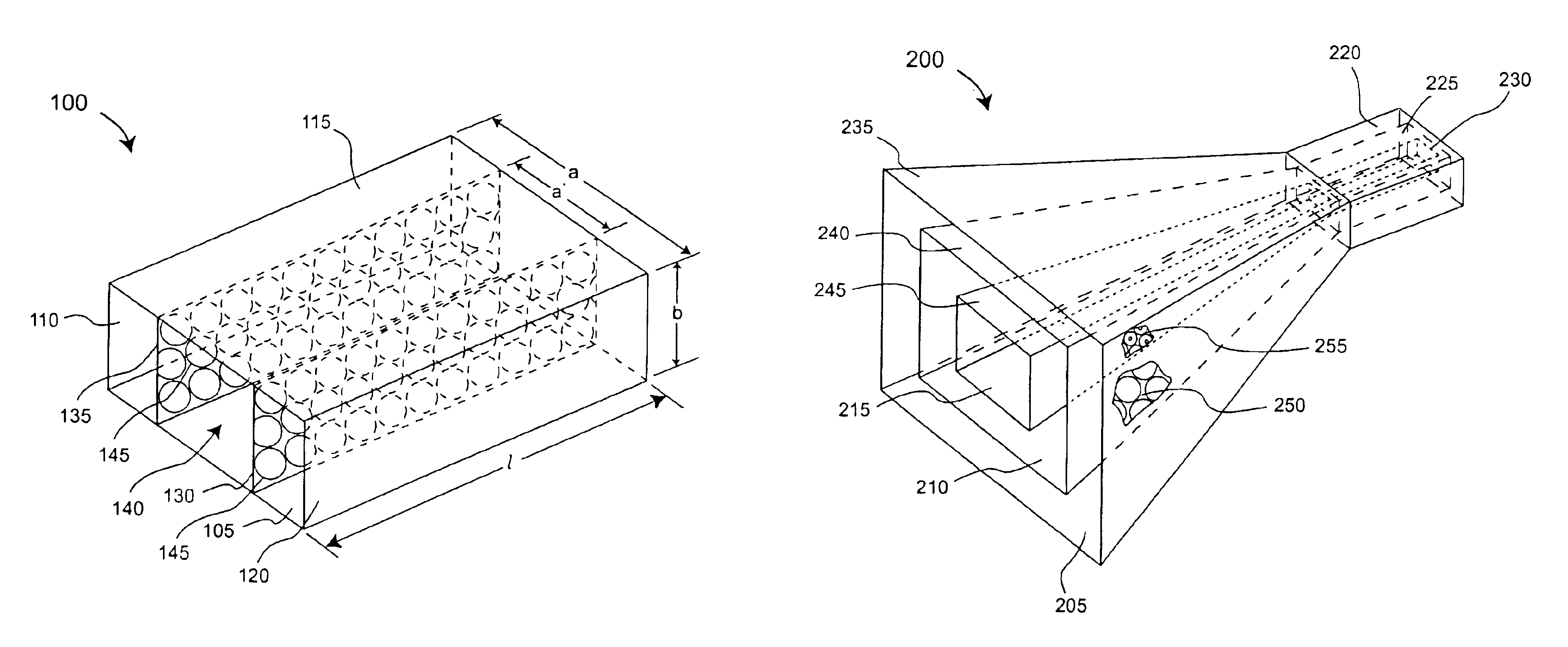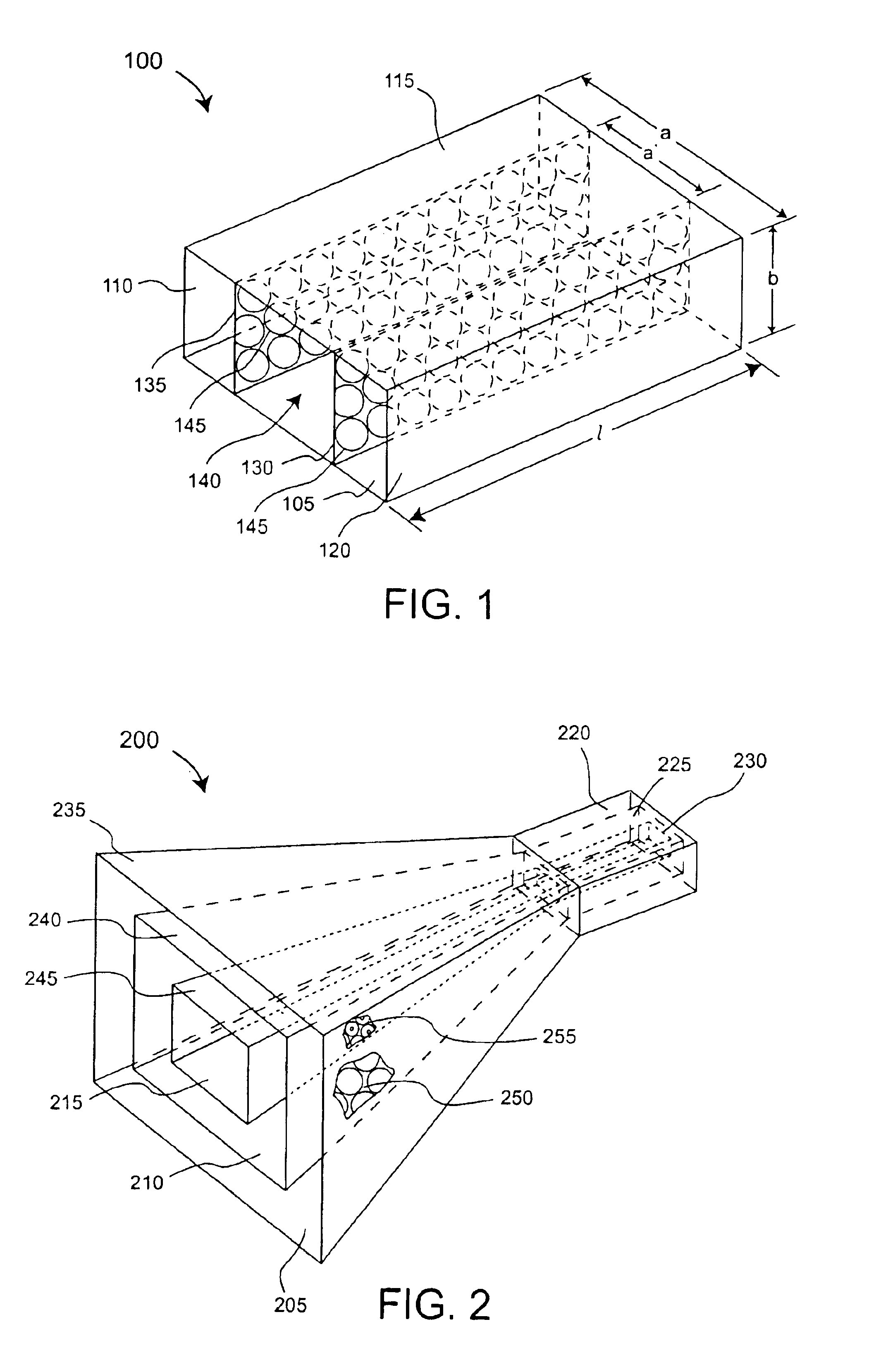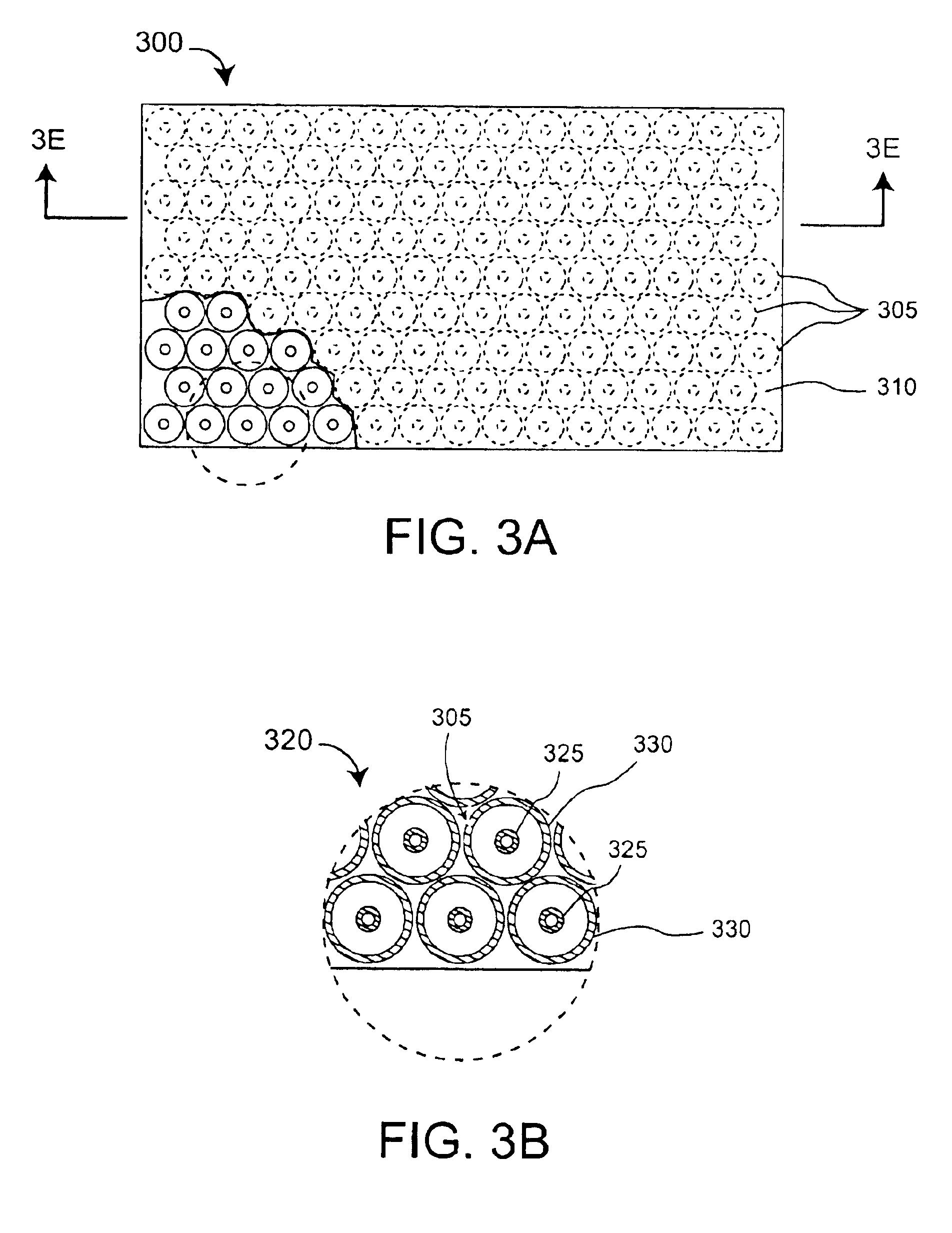Multi-band horn antenna using frequency selective surfaces
a frequency selective surface and antenna technology, applied in the field of horn antennas, can solve the problems of limiting the operational bandwidth of a waveguide, affecting the operation of conventional waveguides, and other modes with different field configurations can occur unintentionally or deliberately, so as to increase the permeability and/or the permittivity of the substrate, reduce the grating lobe of the antenna, and increase the permeability
- Summary
- Abstract
- Description
- Claims
- Application Information
AI Technical Summary
Benefits of technology
Problems solved by technology
Method used
Image
Examples
Embodiment Construction
[0031]The present invention concerns a waveguide including a frequency selective surface (FSS), which comprises FSS elements having relatively small inter-element spacing for a given operational frequency. As compared to conventional FSS's, the small inter-element spacing increases FSS bandwidth and eliminates grating lobes by displacing them to higher frequencies. Further, FSS performance with respect to signal angle of incidence is improved.
[0032]Referring to FIG. 1, an exemplary multi-band waveguide (waveguide) 100 including FSS's 130, 135 is shown. The exemplary waveguide 100 has a rectangular cross section, however, the present invention is not so limited. Importantly, the present invention can be a waveguide having any suitable configuration defining a waveguide cavity 140. For example, the waveguide can have a cross section which is round, square, elliptical, triangular, or any other suitable shape. Further, the waveguide cavity 140 can be filled with a dielectric material or...
PUM
 Login to View More
Login to View More Abstract
Description
Claims
Application Information
 Login to View More
Login to View More - R&D
- Intellectual Property
- Life Sciences
- Materials
- Tech Scout
- Unparalleled Data Quality
- Higher Quality Content
- 60% Fewer Hallucinations
Browse by: Latest US Patents, China's latest patents, Technical Efficacy Thesaurus, Application Domain, Technology Topic, Popular Technical Reports.
© 2025 PatSnap. All rights reserved.Legal|Privacy policy|Modern Slavery Act Transparency Statement|Sitemap|About US| Contact US: help@patsnap.com



